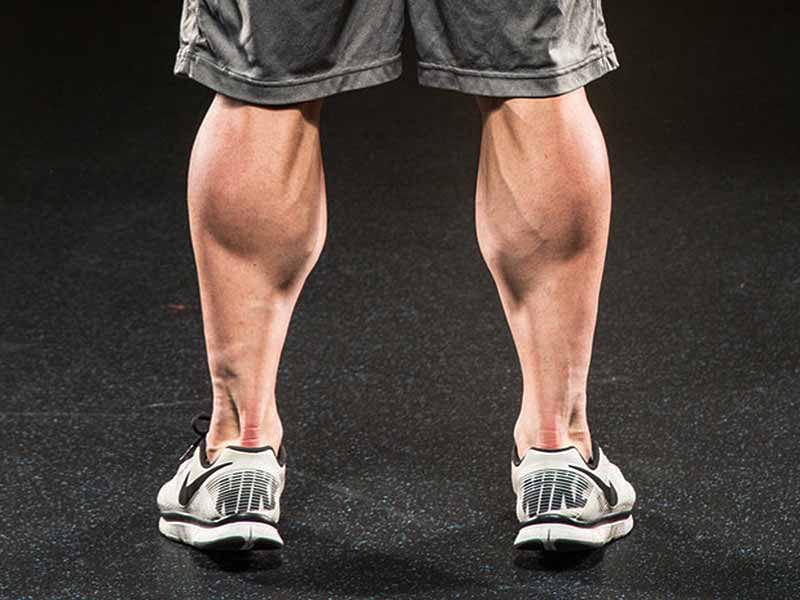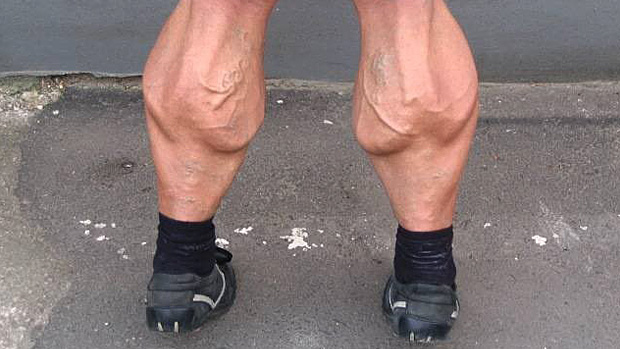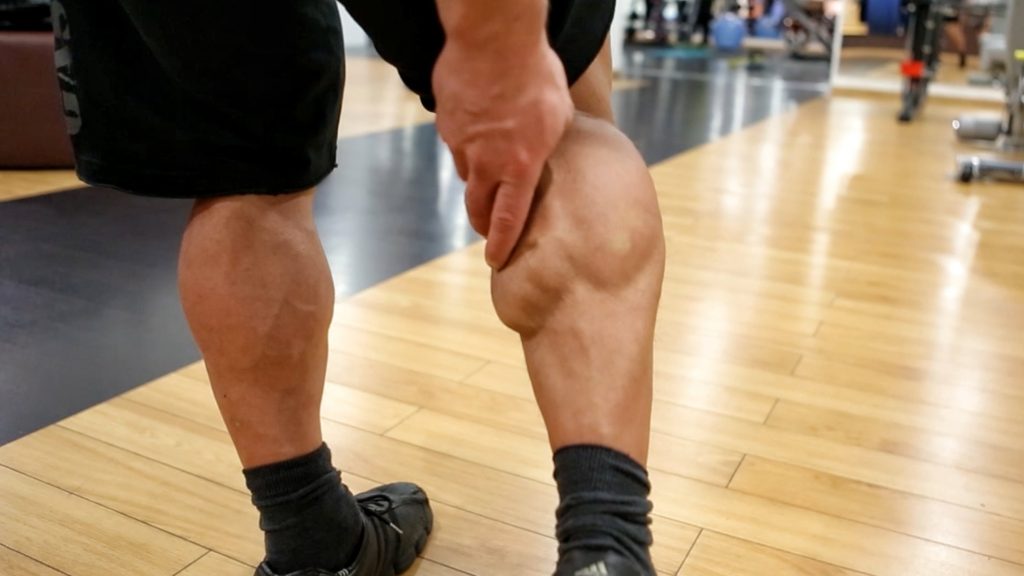
How to pump up the calf muscles
The gastrocnemius muscle is the biceps muscle, which is located on the back of the shin.
Under the gastrocnemius muscle is the soleus muscle, which in turn is attached to the heel along with the gastrocnemius muscle with the aid of the Achilles tendon.
The gastrocnemius muscle is formed by two heads: medial and lateral. Approximately in the middle of the tibia, the two heads are joined, and even further down into the tendon, which is called the Achilles.

With loads that exceed the capacity of the gastrocnemius muscle, injuries can occur.
This, of course, is very short information, but more detailed information is available at specialized medical sites and we will not dwell on this. We will only consider information that can give a brief idea of this group of muscles and how they work.
Lazy muscle
The calf muscle is called a difficult, or lazy muscle. This is because it refers to those muscles, which are rather difficult to develop.
It works in full force only with a straightened knee. That is, the more straight knee, the greater the load on the gastrocnemius muscle. But with a bent knee loaded soleus muscle.
Although from the point of view of most bodybuilders strength training exercises, the soleus muscle does not give many benefits in the total volume of muscle mass, yet it improves the overall appearance of the lower leg.
For this reason, if you want to build up as much muscle mass as possible, you should pay more attention to the gastrocnemius muscle. Of course, the sole is worth training. Still, it is. And it belongs to the same group of muscles. But the maximum attention should be given to the gastrocnemius.
The gastrocnemius muscle belongs to the multi-joint muscles. The places of its attachment are the heel and the femur. Therefore, she must work on “straight legs”. It is in this position that it will develop full power.
How to work the soleus muscle
As for soleus muscle, it refers to one-muscle muscles and therefore does not respond to the position of the thighs. I.e, All exercises with bent knees are exercises for soleus muscle.
Another thing to be aware of is that the soleus muscle consists of slowly contracting fibers, and it should be worked on by an increased number of repetitions with low execution speed. The number of repetitions can be from 15 to 25.
But legs can not be straightened completely. First, it will help to use all the fibers in the work, and secondly, the ratio of length and load to the muscle does not say that the muscle should be maximally stretched to give the maximum effort. That is, you need to select the desired amplitude for maximum impact. In addition, the fully straightened position of the knees is simply dangerous for your lower back and knee joints.

Knees need to be kept at all times in the position of the right articular lock. This means that the knee joint, as well as other joints, can not be straightened completely at maximum loads. With a straight limb, in this case, a leg, it should be slightly bent at the knee joint. That is, in the position of the right articular lock.
Should I believe in new effective methods?
I had to hear about exercises on the “method I developed,” with which … But nothing new is worth inventing. And sometimes it’s just dangerous, because for many decades several generations of bodybuilders have found and selected the most effective exercises in their experience, having checked them for trauma, and discarded others as ineffective or dangerous.
Most of the current “experts” who have not tested these methods themselves recommend these dangerous to health exercises, as the most effective. But I had to see many bodybuilders with a back injury once and for all, after such effective techniques. Yes, justice demands to say that similar methods are much more effective. But they are a time bomb. These techniques will tell you a few years later.
Of course, there is no doubt that the ascent to the toes with straight legs is much more effective than with the legs slightly bent at the knees. That is, in the position of the right articular lock, but the direct position of the knee joint is quite traumatic for the lower back and the knee itself.
Although many experts argue that with the maximally stretched position, the muscle can not give out a maximum of strength. And this means that the smoother the leg, the less power the muscle can develop.
For example, consider the bicep. Try to straighten your arm completely, and strain your bicep. Did not work out? Here and with a leg or foot. But in a slightly bent position, it can be strained.
Of course, the calf does not work much, but the general principles are the same.
How to pump up the calf muscles?
By nature, the calf muscles are very hardy and adapted to fairly long intense loads. Due to this, we can run long distances and walk all day. The main part of the calf muscles is composed of slow muscle fibers. They are very hardy but grow poorly. Nevertheless, the calf muscles respond well to the average number of repetitions with a large weight and soleus to a large number of repetitions with a moderate weight. To make eggs grow you need to work to failure. The rest between workouts should be long enough to allow them to fully recover and conduct the next workout at the peak of super-compensation (when your muscles have fully recovered and become slightly larger). Shin muscles are enough to train twice a week. Training will take no more than 20 minutes. The rest between workouts should be 3-4 days. To avoid adaptation, I advise you to alternate the load, change the exercises, and perform them from different angles.
Exercises for the calf muscles
- – Standing on toes (in the simulator, with a barbell on your shoulders or in lowered hands, lifting on toes with one leg with dumbbells in your hand, …)
- – Rise on socks while sitting
- – Heel lift
- – Lift on socks with a partner on the lower back (Donkey)
- – Toe lifting in the simulator for leg press
Compose your shin muscle training yourself, following the recommendations outlined, depending on your capabilities. Some exercises can be performed even at home.
Sample calf muscle training program
Monday
- Rise on socks standing 2 warm-ups + 4×10-12
- Lifting on socks while sitting 1 warm-up + 4×15-25
- Standing heel 4×12-20
Friday (working weight -50%)
- Standing on toes 1 warm-up + 8×15-20
- Lifting on socks while sitting 1 warm-up + 6×20-30
How to properly calf muscle
So, we considered two different opinions about the gastrocnemius muscle:
- One of them is the work with straight legs, which in time can lead to problems with the back and knee joints, but no doubt much more effective, and gives quick results.
- The second gives not so fast results, but more true. Therefore, the optimal position of the leg is the position of the right articular lock.